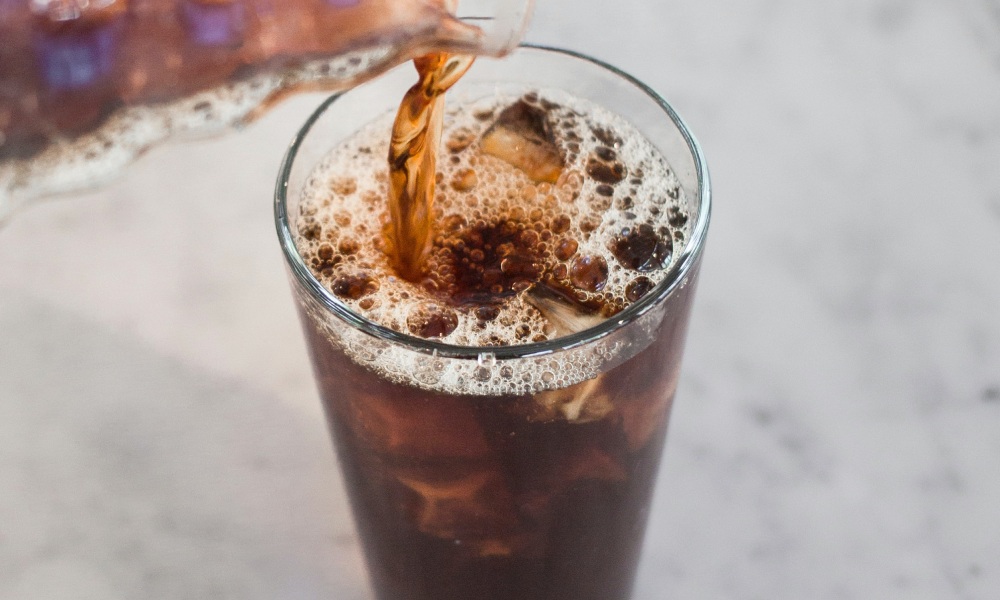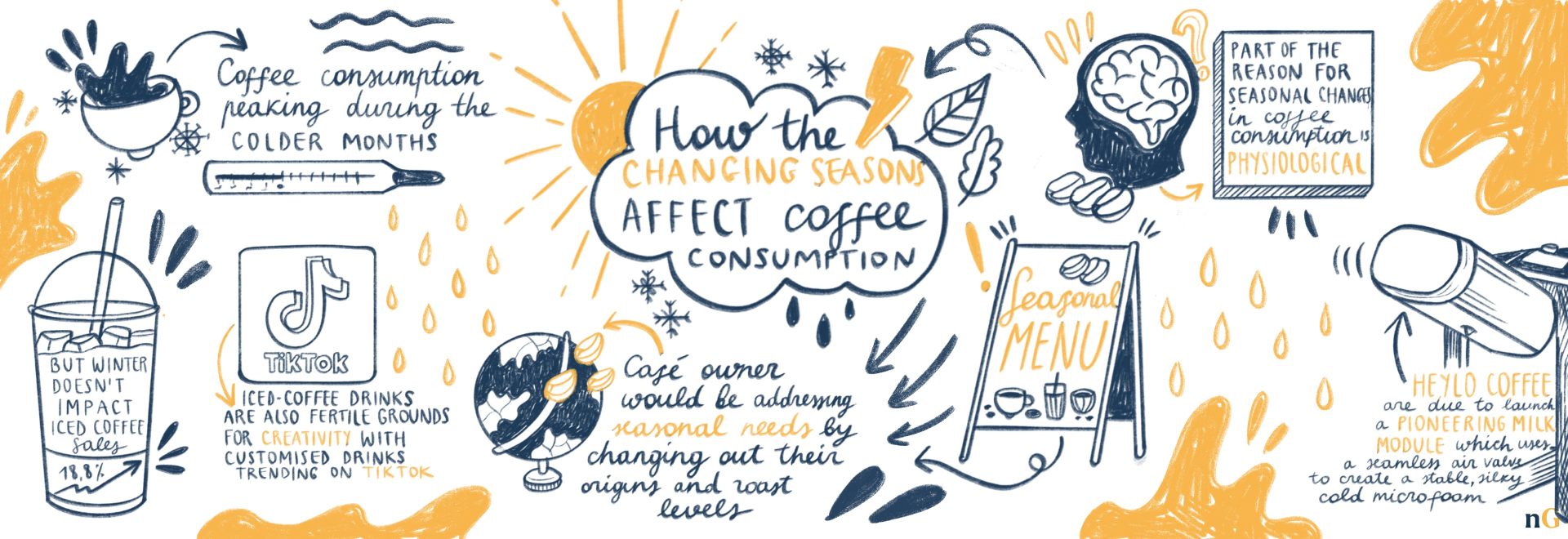How does weather influence coffee drinking habits?
Matt Haw speaks to cold brew consultant and educator, Randy Anderson, to examine how changes in the weather alter coffee drinking habits around the world.
Do you find yourself drinking more cups of coffee during the cold winter months? If so, you’re not alone.
Figures suggest that when temperatures drop, consumers purchase more coffee. A TradingSim report indicates that coffee consumption falls by 12% during the summer months before climbing back up during autumn and winter. Further trading data supports this, demonstrating that consumption peaks during the colder months.
Physiological factors are a significant contributor to this trend. Humans crave warm drinks in winter and cold drinks in summer to help them regulate body temperature. However, Norwegian restaurant Cornelius has also studied how our taste buds become more receptive to richer foods in the winter. Conversely, when the temperature rises, our preferences shift to lighter flavours.
This theory is supported by data from Technomic, which establishes seasonality as a determining factor in consumers’ flavour preferences. Nearly two in five consumers say their flavour preferences shift according to the time of year, with certain flavours being significantly more appealing during particular seasons. (Just think of the popularity of pumpkin spiced lattes during autumn.)
“Maybe it’s in our DNA,” says cold brew consultant, Randy Anderson, “but in winter months, we crave fattier foods, things that are very starchy, and things that give us a lot of energy.”
If nothing else, it’s compelling evidence for why a double-shot, whole milk latte hits differently on a chilly autumn morning. But things are rapidly changing.
The booming popularity of iced, cold brew, and ready-to-drink (RTD) coffee formats is shaking up the market and turning theories about weather and coffee drinking habits on its head. For example, in December 2021, Starbucks reported that sales of its cold, RTD coffees were up nearly 20%, while cold beverages made up three-quarters of all drinks sold.
So is it time for cafés to look beyond the seasons when it comes to planning their menus?

Plugging a sales gap
Based on several years worth of data, joe, a mobile ordering coffee company, found that hot drinks reclaim their position as the most ordered drink type around the middle of September – about a week before the official start of fall. By November, they make up about 70% of all drink orders before steadily declining from March and bottoming out to just a third of drink orders by mid-July.
In order to plug the falling demand, coffee shops typically roll out specific drinks depending on the time of year. This is done with the idea of boosting sales and keeping customers loyal and interested.
Tim Wendleboe’s famous espresso bar in Oslo, for example, launches an iced coffee menu to coincide with the city’s short, intense summers. The late spring launch is eagerly anticipated by customers, creating higher engagement and keeping sales propped up during what might otherwise be a slow period for business.
However, Randy warns that this model may not work for everyone. He suggests that different regions demand different approaches, with cold coffee increasingly becoming the preference the closer one gets to the equator.
“I have customers who I’ve worked with in Central America who say, year-round, that cold coffee is becoming more popular,” he says.
The prevalence of RTD coffee products has certainly helped facilitate growth in this sector, and cold coffee drinks are also fertile ground for creativity. Custom drinks often trend on TikTok, with many disregarding the weather and using them to express themselves throughout the year.
For consumption in general, this is good news. Much in the same way that decaf coffee has extended the hours at which consumers drink coffee, the growing interest in RTD and iced coffee drinks have put summer months at levels previously seen only during winter months.
In March last year, the National Coffee Association (NCA), 66% of Americans reported drinking coffee each day. This was up by nearly 14% since January 2021, the largest increase since NCA began tracking data.

Catering to a new brand of coffee consumer
The coffee world is constantly evolving, with new tastes and trends emerging all the time.
But even in the midst of changing customer demands, seasonal menus still have a role to play in coffee shops. And according to Randy, rotating origins and choosing recently harvested coffees can help businesses keep their customers coming back for more.
“It’s not just about having one flagship product that’s supposed to fit everyone,” he explains.
“Café owners can keep up with seasonal needs by changing up their origins and roast levels, and even their extraction methods. This way, you can offer a variety of flavours – some strong, some light, some for after dinner, and some for summertime sipping.”
For businesses looking to tap into the growing demand for cold coffee drinks, even in winter, increasingly innovative technologies have sprung up. Heylo Coffee’s Milk Module, for example, creates cold and silky milk foam on demand.
By embracing these types of solutions, speciality businesses can expand their menus and create an endless array of delicious cold coffee creations, no matter what the season.








